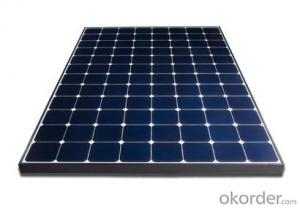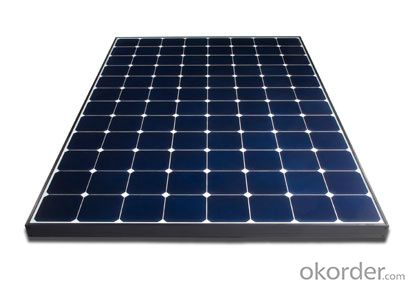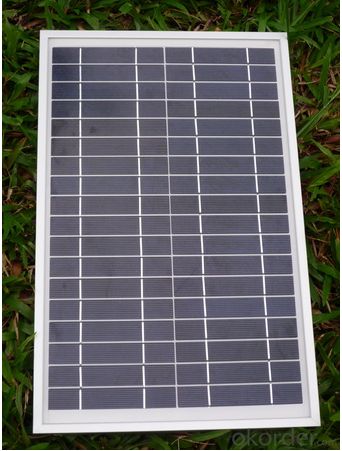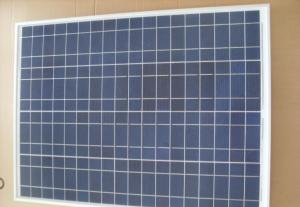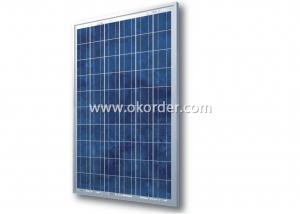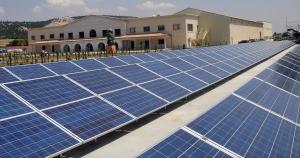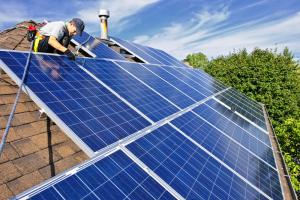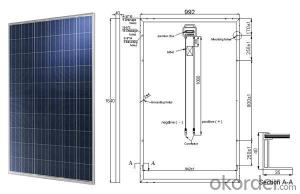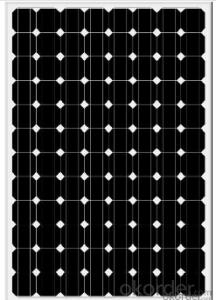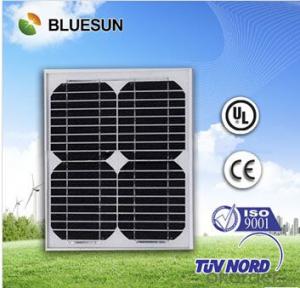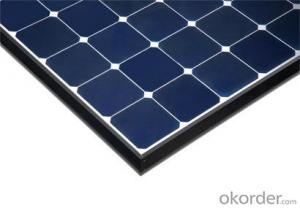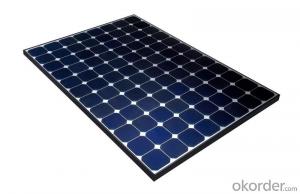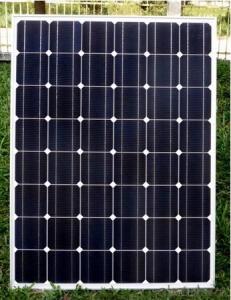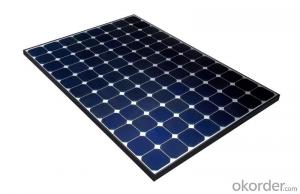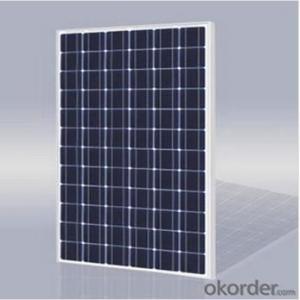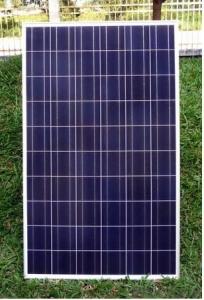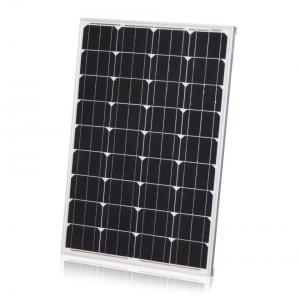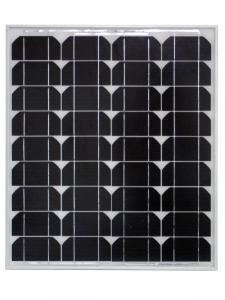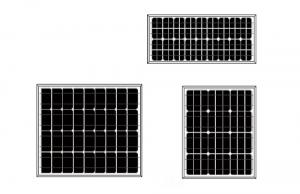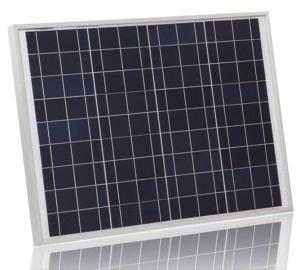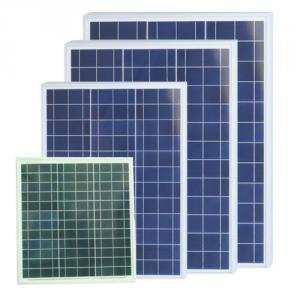Newpowa Solar Panels - Multicrystalline Solar Panel 195W A Grade for Commercial
- Loading Port:
- Shanghai
- Payment Terms:
- TT OR LC
- Min Order Qty:
- 100 watt
- Supply Capability:
- 20000 watt/month
OKorder Service Pledge
OKorder Financial Service
You Might Also Like
Specification
Muticrystalline Solar Panel 195W A Grade For Commercial
Introduction
It is a form of photoelectric cell, defined as a device whose electrical characteristics, such as current, voltage, or resistance, vary when exposed to light. Solar cells are the building blocks of photovoltaic modules, otherwise known as solar panels.
Connecting cells in parallel yields a higher current; however, problems such as shadow effects can shut down the weaker (less illuminated) parallel string (a number of series connected cells) causing substantial power loss and possible damage because of the reverse bias applied to the shadowed cells by their illuminated partners. to create an array with the desired peak DC voltage and loading current capacity, using independent MPPTs (maximum power point trackers) is preferable. Otherwise, shunt diodes can reduce shadowing power loss in arrays with series/parallel connected cells.[citation needed]
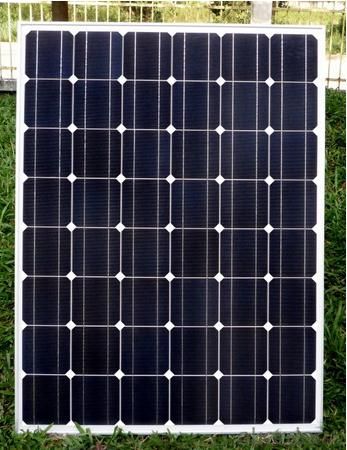
Suggested application
Home lighting business lighting,
Garden lighting, pavement lighting
Farmer household lighting
Product feature
modules are made of Monocrystalline or Polycrystalline Silicon cell.
Materials and color of the solar panel frame: Clear anodized aluminum alloy type 6063T5 Universal frame; Silver-white color;
The output connection gathers the coupling: Selects conforms to the IEC-612615; 2005, class II, IEC61730 international standard; Airtight waterproofing binding clamp;
Module seal structure: The surface is thick, the high diaphanous rate armored glass with solar cell board special-purpose 3.2mm becomes after the high temperature lamination craft. The back selects has waterproof and anti- aged performance fine TPT materials. The entire block battery board has, the waterproofing, the anti- aging airtight and so on the fine performance;
Power tolerance: +/-3%
Packaging
International standard cartons(according to the requirements of customers )
- Q: Can solar panels be installed on a restaurant or food establishment?
- Yes, solar panels can definitely be installed on a restaurant or food establishment. In fact, many restaurants and food establishments are increasingly adopting solar energy as a sustainable and cost-effective solution to power their operations. By installing solar panels, these establishments can reduce their carbon footprint and save on energy costs in the long run.
- Q: Can solar panels be installed on a data center or technology facility?
- Yes, solar panels can be installed on a data center or technology facility. In fact, many data centers and technology facilities around the world have already adopted solar energy as a means of powering their operations. Solar panels can be installed on rooftops, parking lots, or nearby land to generate clean and renewable electricity, reducing the facility's reliance on traditional power sources and lowering its carbon footprint. This not only helps in reducing energy costs but also contributes to a more sustainable and environmentally friendly operation.
- Q: How do solar panels affect wildlife?
- Solar panels can have both positive and negative impacts on wildlife. On one hand, they can provide shade and shelter for certain species, promoting biodiversity. Additionally, solar farms can be designed to have minimal impact on local ecosystems, preserving habitats and reducing fragmentation. On the other hand, large-scale solar installations may disrupt natural habitats during construction and operation phases, potentially causing displacement or disturbance to some wildlife species. It is crucial to carefully plan and manage solar projects to minimize any negative effects and ensure coexistence with wildlife.
- Q: I'm thinking of these solar panels that people have on their rooftops in domestic properties. I suppose I mean after how long do you break even with respect to just carrying on without them and getting you electricity from the utilities companies? Or answer in any way you think is pertinent. The more info the better.
- The payback period for a solar PV installation is based upon the cost of the installation compared to the savings achieved. Therefore if you installed a modest set of panels yourself, did not need on site electrical storage and did not have any permitting fees but did enjoy rebates you would be doing better than if the installation costs were high, the solar equipment was expensive, you had to purchase storage batteries, it was costly to maintain and permitting was absurd. On the other side of the equation if your electrical use is high, you perhaps own an EV or you can sell power at a high rate then the costs you will be offsetting will be higher and the payback period will be lower. If your electrical use is minimal, there is no time of use metering available the payback period will be higher. Some of the costs you may be offsetting may not be electrical. If you concurrently purchased an EV then you may be offsetting the cost of gasoline which would be higher than electricity. Overall rebates and incentives play a major role. I have seen payback periods as low as 3 years claimed (commercial installation with special city tax breaks) and as long as over 20. A bell curve would probably find most of the installations in the 7 to 5 year category. A solar thermal installation (for hot water, heating and sometimes AC) is far more efficient and most would be in the range of 2 to 8 years.
- Q: I have a playstation PSP charger that is 5v 2A, so it takes 0 watts.I have several small solar panels that put out watt a piece and are 4 volts, 250mAhow can I get my 0 watts to be 5v 2A instead of 4v 250mA? the voltages have to match up right?also, what's a 3-T regulator that controls voltage?
- 3-T is just one type of many devices designed to control voltage so you get the amount you desire with as little static as possible. Without you having an degree in engineering, I can't explain it to you any better. You will also need to produce true sine wave energy or you will burn out your PSP with the correct volts and amps. You need one to produce only 5 volts 2amps. Anything different will burn out yur PSP. Your problem is simple math. Watts = volts multiplied by amps. Amps = Watts divided by volts. So if your solar panels can produce /4 amp ( 250 mA) each, then you connect one to the other in a series until you get enough connected to make 2A. ( 8 panels { /4mA x 8 = 2A}) You now have a panel with 32Volts, 2Amps, 64 Watts. This is where the T-3 regulator comes in. If you buy one for 5 volts, it will allow only 5 volts 2 amps, to go to your PSP.
- Q: Can solar panels be damaged by birds or other animals?
- Yes, solar panels can be damaged by birds or other animals. Birds may build nests under the panels or peck at the wiring, leading to potential system malfunctions. Similarly, other animals like squirrels or rodents may chew on the wires or cause physical damage to the panels. It is advisable to take preventive measures to protect solar panels from such animal interference.
- Q: I'm just geting into electonics and stuff. So I am trying to make a simple USB charger. I'm looking for at least 4 volts output. What I've got is two solar panels (detached) a 4 AA battery holder, and a circuit board with an led on it (took the solar panels out of old lawn lights. I need more charge out of my panels (I think) so I tried attaching them. I soldered the positive wire from one to the positive connection on the other and negative wire to negative connection. After doing so and checking the multimeter, it says I have no output at all. How do you connect them?
- You will need to wire several cells in series to obtain the necessary voltage, and you may need to wire several sets in parallel to obtain the required current. Series: Connect the + lead of one cell to the - lead of the next. You may chain any number of these together this way, and the output voltage will be the sum of the output voltages of each cell. The output current will be the greatest current of each individual cell. Parallel: Connect the + leads of each cell together, and the minus leads of each cell together. The output current will be the sum of the output currents of each cell. The Output voltage will be the greatest voltage of each individual cell. Picture this: think of the series cells as a column, connected from top to bottom. Think of the parallel cells as a row, with all the tops connected together and all the bottoms connected together. To arrive at the required voltage *and* current, you will need an array of cells, in rows and columns. The voltage will be the sum of each column, while the current will be the sum of each row. Most solar panels are arrays of individual cells. The arrays are then connected in the same fashion to provide the necessary combination of voltage and current.
- Q: Can solar panels be used for powering remote monitoring systems?
- Yes, solar panels can be effectively used for powering remote monitoring systems. Due to their ability to generate electricity from sunlight, solar panels provide a reliable and sustainable power source for remote locations where access to grid electricity may be limited or non-existent. By harnessing solar energy, these panels can provide continuous power to remote monitoring systems, enabling them to function and transmit data without the need for traditional electricity sources.
- Q: Can solar panels be installed on flat surfaces?
- Yes, solar panels can be installed on flat surfaces. While it is more common to install solar panels on angled surfaces or rooftops to optimize their exposure to sunlight, flat surfaces can also be used. In such cases, mounting systems or support structures are used to tilt the panels at an angle that maximizes their efficiency.
- Q: Can solar panels be used for powering a theme park or amusement park?
- Yes, solar panels can be used for powering a theme park or amusement park. Solar energy is a clean and renewable source of power that can generate electricity to meet the energy demands of such facilities. By installing a sufficient number of solar panels, a theme park can reduce its reliance on traditional grid electricity and lower its carbon footprint. Additionally, the large open spaces within theme parks often provide ample opportunities for installing solar panels, making it a viable option for sustainable energy generation.
Send your message to us
Newpowa Solar Panels - Multicrystalline Solar Panel 195W A Grade for Commercial
- Loading Port:
- Shanghai
- Payment Terms:
- TT OR LC
- Min Order Qty:
- 100 watt
- Supply Capability:
- 20000 watt/month
OKorder Service Pledge
OKorder Financial Service
Similar products
Hot products
Hot Searches
Related keywords
